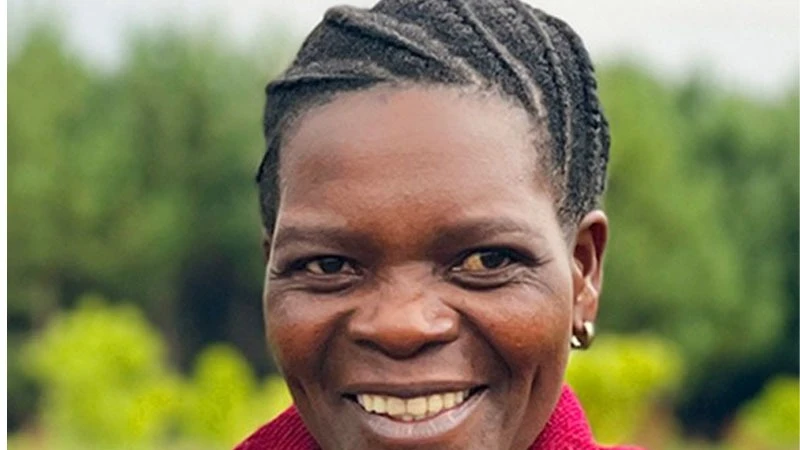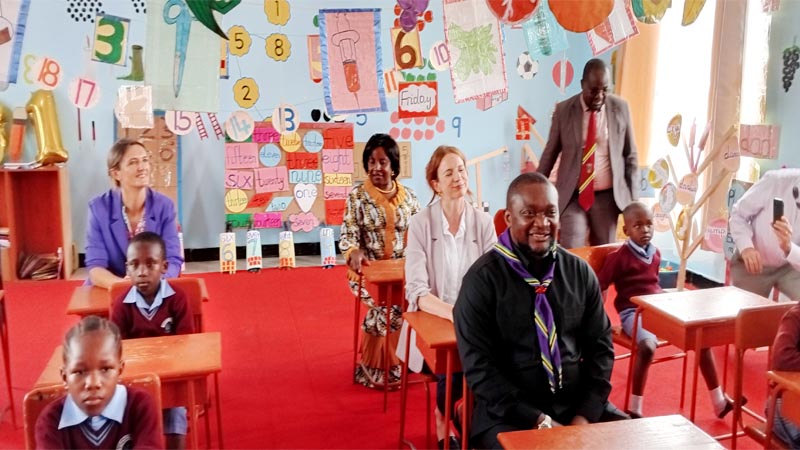High tech, high yields? Kenyan farmers deploying AI to increase productivity

SAMMY Selim strode through the dense, shiny green bushes on the slopes of his coffee farm in Sorwot village in Kericho, Kenya, accompanied by a younger farmer called Kennedy Kirui. They paused at each corner to send the farm’s coordinates to a WhatsApp conversation.
The conversation was with Virtual Agronomist, a tool that uses artificial intelligence to provide fertiliser application advice using chat prompts. The chatbot asked some further questions before producing a report saying that Selim should target a yield of 7.9 tonnes and use three types of fertiliser in specific quantities to achieve that goal.
“My God!” Selim said upon receipt of the report. He had planned to use much more fertiliser than Virtual Agronomist was recommending. “I could have wasted money.”
In Kericho and other parts of Kenya, AI-powered tools have become increasingly popular among small-scale farmers seeking to improve the quality and quantity of their produce.
Pests, diseases and a lack of technical knowhow mean farmers have become accustomed to suffering crop losses on a large scale. They used to rely on advice from agricultural extension officers – professionals deployed by local governments to provide educational services to farmers – but their numbers have declined in recent years due to inadequate funding.
Selim started using Virtual Agronomist on his 0.4-hectare (1-acre) farm in 2022, with the help of another farmer who had a smartphone at the time. Following its recommendations, his farm produced 7.3 tonnes of coffee, his highest yield ever. He’s optimistic that the new recommendations will work too. “Technology helps,” he said.
Before adopting Virtual Agronomist, Selim would simply apply fertiliser using what he described as “general farmer’s knowledge”, putting different types at different times of the year without knowing the soil health. The farm’s productivity was low. In one season, he managed to produce only 2.3 tonnes of coffee.
At other times, he’d take samples of his soil for testing at labs far from Sorwot, but the results would take months to come back and sometimes they wouldn’t arrive at all.
“A big challenge for farmers is not knowing exactly what their soil needs,” said Florah Maritim, factory manager at Sorwot Coffee Farmers Cooperative Society, which buys coffee from local farmers.
The story is similar for farmers trying to determine what pests and diseases have affected their crops.
Musau Mutisya, from Kwa Mwaura village in Machakos county, said he used to rely on his own knowledge to identify pests and diseases, but he wasn’t always accurate.
On a recent sunny morning on his 0.6-hectare (1.5-acre) farm, he stood next to a maize plant, pointing his phone’s camera at a ragged, torn leaf using PlantVillage, an AI-powered app for diagnosing pests and diseases.
A voice assistant instructed him on where to hold the phone, identified the pest as the fall armyworm, then gave him advice on how to control it. “We were doing guesswork in the past,” he said. “You’ll end up using more money treating what you don’t know.”
Both tools work by training AI models on images and data. Researchers at PlantVillage fed their model thousands of images of healthy and diseased crops to help it learn how to identify pests, while for Virtual Agronomist researchers trained a model to predict PH and other soil properties using continent-wide satellite data.
There are seven and a half million small-scale farmers in Kenya. But the country has an extension officer-to-farm household ratio of 1:1093, far lower than the 1:400 ratio that the Food and Agriculture Organization recommends.
Farmers need information to succeed, said Enock Chikava, director for agricultural delivery systems at the Gates Foundation, which supports the nonprofit outfit iSDA that created Virtual Agronomist. Technology can help fill the gap left by the lack of extension officers, he said. “We believe in the power of digital,” Chikava said. “It can really, really disrupt things.”
A report released in July by the GSM Association found that most use cases of AI in Kenya, Nigeria and South Africa were in agriculture and food security.
The report said the potential for the technology to support socioeconomic growth on the continent was massive, but to realise it efforts needed to be made to tackle digital skills shortages and get more smartphones in people’s hands.
Both PlantVillage and Virtual Agronomist use a “lead farmer” model, whereby farmers with smartphones are trained to use the tools not only on their own farms but also on neighbouring plots. PlantVillage is free to use, as is Virtual Agronomist for all crops apart from coffee, for which it charges KSh300 (about £1.70) for advice.
Despite the promise, some scientists caution about dependence on AI tools for agriculture. Angeline Wairegi, who has researched the use of the technology in agriculture in east Africa, said most AI training datasets exclude indigenous knowledge, meaning the information they provide can exclude successful localised practices.
“Heavy reliance on AI tools to set farming practices may result in the erosion of long-held, and tested, indigenous agricultural practices,” said Wairegi, founder and research director at Athene Research Group.
But for farmers such as Boniface Nzivo in Mua village in Machakos county, AI is a game changer. He uses a system called FarmShield to monitor temperature, humidity and soil moisture and advise him on when to water his cucumbers – aspects that he used to struggle with.
“I don’t waste time trying to figure out how much water to use,” he said while inside a greenhouse for growing the plant, which needs consistent water supply. “It’s a great technology.”
By Carlos Mureithi
Top Headlines
© 2025 IPPMEDIA.COM. ALL RIGHTS RESERVED

























